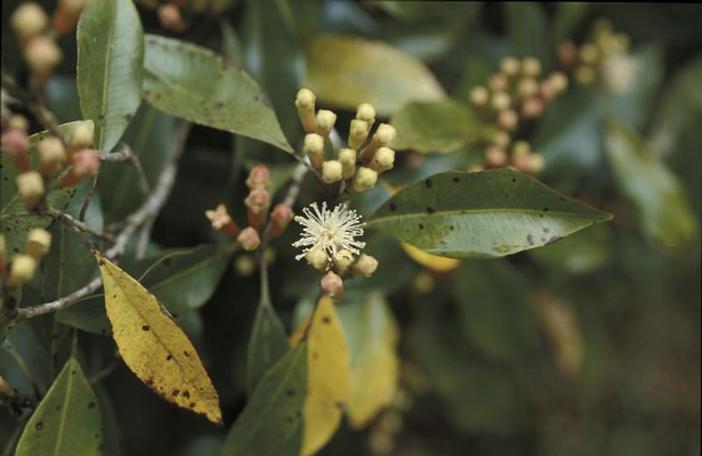Clove
(Syzygium aromaticum)
Clove (Syzygium aromaticum)
/
/

voyage-madagascar.org
CC BY 2.0
























Estimated Native Range
Summary
Clove trees are valued for their aromatic flower buds, which are used as a spice in cuisines worldwide and have medicinal properties. They are cultivated in tropical climates, often in spice gardens or plantations. Clove trees require full sun exposure and consistent moisture, thriving in well-drained, fertile soils. They are not tolerant of cold temperatures and need protection from strong winds. Clove oil, derived from the buds, leaves, and stems, is used in traditional medicine and as a flavoring agent. The tree’s dense canopy and evergreen nature make it suitable for ornamental use in suitable climates. However, it can be susceptible to pests like stem borers and fungal diseases such as leaf spot.CC BY-SA 4.0
Plant Description
- Plant Type: Tree
- Height: 50-60 feet
- Width: 7-8 feet
- Growth Rate: Slow
- Flower Color: Cream, Red
- Flowering Season: Summer
- Leaf Retention: Evergreen
Growth Requirements
- Sun: Full Sun
- Water: Medium
- Drainage: Slow, Medium
Common Uses
Bee Garden, Butterfly Garden, Edible*Disclaimer: Easyscape's listed plant edibility is for informational use. Always verify the safety and proper identification of any plant before consumption., Salt Tolerant, Showy Flowers
Natural Habitat
Native to the tropical rainforests of the Molucca Islands
Other Names
Common Names: Cloves, Clovetree, Gewürznelkenbaum, Clavero Giroflé, Clavo De Olor, Árbol Del Clavo, Giroflier, Cravo-Da-Índia, Kryddnejlika, Cavo-Aromático
Scientific Names: , Syzygium aromaticum, Eugenia aromatica, Eugenia caryophyllus, Caryophyllus aromaticus, Eugenia caryophyllata, Jambosa caryophyllus, Caryophyllus silvestris, Caryophyllus hortensis, Myrtus caryophyllus,
GBIF Accepted Name: Syzygium aromaticum (L.) Merr. & Perry